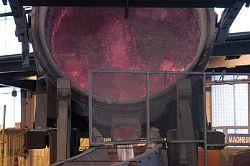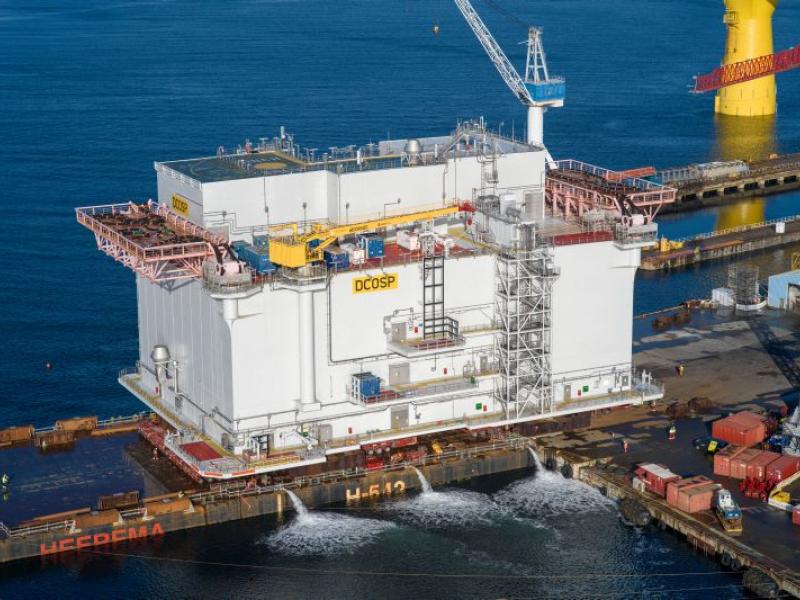New Zealand Aluminium Smelters (NZAS) has made considerable energy efficiency and carbon emission reduction gains at its aluminium smelting plant in Tiwai Point. This is the result of the company’s successful Lean Six Sigma continuous business improvement programme. According to NZAS general manager Paul Hemburrow the company in 2007 produced approximately 350,000 tonnes of aluminium. He says the company produces the highest purity aluminium of any smelter in the world, at the best energy efficiency levels in the world for smelters that use P69 reduction cells, and is close to best for smelters that use CD200 reduction cells. He bases this on internal benchmarking carried out by the smelter’s owner Rio Tinto and external benchmarking results published annually by the International Aluminium Institute. (Visit www.world-aluminium.org) The domestic market absorbs about nine percent of NZAS’s production. It sells the rest of its production offshore, generating approximately $1 billion in export earnings per year. Says Hemburrow: “Super or 99.98 percent pure aluminium is in high demand for special applications – for example, those where conductivity is required, such as the high-end electronics industry. “What may appear to be marginal differences in purity can result in significant changes in the metal’s properties,” says Hemburrow. “Our competitive advantage is the consistent high purity of our product.” Award-winning performance In November last year, the New Zealand Business Excellence Foundation (NZBEF) named NZAS the first recipient in 13 years for its highest honour, a Gold Award. The Award recognises local businesses’ commitment to and understanding of the requirements of world best business practice and long-term excellence in business. According to the NZBEF, the adjudication model is fully aligned to the prestigious, internationally recognised US Baldrige framework. A company’s environmental impact performance is one of the aspects taken into consideration by the judges. In 2003 NZAS had won a Bronze Award. Hemburrow says winning Gold last year was the result of many years spent improving the business across the board, implementing the company’s continuous improvement strategy; Lean Six Sigma. “It takes a great team to turn aluminium into gold. The criteria we were measured against helped identify gaps in performance so even though we achieved the highest level it has given us direction in helping to get even better. “We are not resting on our laurels and will be looking at more ambitious goals and objectives for the future.” One of these objectives is to increase energy efficiencies even more. In 2007 NZAS, in line with its ambitious targets, used about 14.27 direct current megawatt hours of electricity to produce one tonne of aluminium; in the process emitting 1.94t of carbon dioxide equivalent gases. Hemburrow says the 2008 targets are set even tighter, and so far the company is achieving its strategic plan. The energy efficiency and emission reduction gains, like the work that took the company from Bronze to Gold, are also the result of long-term projects. In 2003 the company, as part of Lean Six Sigma, implemented a cluster of ongoing projects called Project 200, designed to save 200 millivolts of power in the smelter’s reduction lines. In 2006 it implemented Project PFC Zer0, specifically focused on optimising the chemical reaction to produce super pure aluminium, which automatically maximises energy efficiency and minimises harmful emissions. “NZAS accepts the science behind climate change. As an emitter we have a responsibility to the community and other stakeholders to engage constructively around policy and technology solutions to climate change,” says Hemburrow. “We play an active role in meeting New Zealand’s Kyoto commitments and are committed to finding ways to be part of the solution to our energy shortage.” As part of Project 200 NZAS employees undertook a range of small operational and large capital projects to improve energy efficiencies and achieve cost savings pursuant to saving the 200mV of power. These ranged from repairing welds on conductive bus bars to undertaking significant design changes to anode assembly connections. p20 Project 200 progress In 2006 Project 200 delivered 81mV in benefits and in 2007, 72mV – together equating to 150mV or an annual value of $18 million from improved energy efficiency and the associated increase in aluminium production. A further 100mV of potential Project 200 savings have been identified and included in the NZAS strategic plans to 2011. Hemburrow explains how the NZAS team achieved and will continue to pursue these savings: In an aluminium smelter plant alumina is electrolytically reduced to molten aluminium. The reduction happens in a large carbon or graphite lined steel container, called a reduction cell. There are many cell designs in use around the world today – NZAS uses the designs known as P69 and CD200. The P69 cell hails from the late 1960s. The 624 P69 cells in the NZAS plant are each four metres by seven metres by five metres in size. They are also known as side-by-side end riser cells to describe their configuration. The CD200 cell, of which NZAS has 48, is a design from the mid-1990s, and is slightly bigger. They are known as side-by-side centre riser cells. The cells are lined up in long rows called potlines. The NZAS smelting plant has four of these potlines – lines one, two and three each consists of 208 P69 cells. Each line runs in a horseshoe shape, with 104 cells on each 600-metre leg. The fourth is a straight potline with 48 CD200 cells. To accommodate all this production the plant occupies 92 hectares of land. The production process Alumina in the cells changes into aluminium through the Hall-Heroult process. British scientist Sir Humprey Davy discovered aluminium in 1808. However, it was only in 1886 that two young scientists, Charles Hall of the US and Paul Heroult of France, made the simultaneous discovery that molten cryolite, a sodium aluminium fluoride mineral, added to alumina will dissolve the latter. When a direct electrical current is run through the mixture and it reaches 900 degrees Celsius, a chemical reaction occurs that produces aluminium. Typically the electrical voltage of the DC used in a reduction cell is around 4.4 volts, but the amperage is very high, around 194,000 amperes. The electrical current flows between positively charged carbon anodes in the mixture and a negatively charged cathode, formed by the carbon or graphite lining of the cell. The electric current causes the carbon of the anodes to combine with the oxygen in the alumina. The chemical reaction produces metallic aluminium and carbon dioxide. The molten aluminium settles to the bottom of the cell where it is siphoned off on a regular schedule into crucibles. From there, it is poured into product such as ingots, billets and block, ready for transport to the markets. The carbon dioxide escapes via ducts, gets scrubbed in accordance with Environment Southland’s provisions, and is released into the atmosphere. Hemburrow says the company keeps emissions well under Environment Southland’s consent limits and consistently receives top ratings in annual compliance monitoring reports. Anodes are made of petroleum coke and pitch. A P69 cell has 18 anodes and a CD200 cell has 20 – anodes are suspended in the mixture. The reduction of one tonne of aluminium requires around half a tonne of carbon anodes. An anode is replaced after 25 days life in the cell, and approximately 500 anodes are required each day to meet reduction requirements. The plant was built in 1971 and over the years has been extended three times. Over the years the size of the carbon anodes has also been increased in various stages. The latest change implemented in September 2006 was an increase in length by 40mm from the existing length of 1460mm. The increased anode size resulted in excellent efficiencies so far – reduced voltage losses in the cells at constant current of 40mV for the P69 cells and 45mV for the CD200 cells. The 1500mm-long anodes also improved heat balance control in the reduction lines. Hemburrow says the real headache around emissions and electricity consumption in the smelting process is an event called ‘the anode effect’. Project PFC Zer0’s target is to eliminate it. “When a reduction cell runs out of dissolved alumina, the cell voltage climbs,” explains Hemburrow. “The energy that should have been used to reduce the alumina to aluminium now begins to break down the cryolite, which contains fluoride. When the cell voltage is above eight volts, the cryolite breaks down and generates perfluorocarbon gases. And, of course, aluminium production has now stopped – an unacceptable lose-lose situation,” he says. The two perfluorocarbon (PFC) gases generated are CF4 and C2F6. These two gases are almost ten thousand times more effective than carbon dioxide (CO2) to create the greenhouse effect. The gases are collectively called carbon dioxide equivalents. Hemburrow says master the anode effect, and you master emission control, energy efficiency, and product purity. To do this, it is necessary to master optimum alumina levels in the cells and electricity levels in the mixture. He is very proud of the team’s achievement in this respect. “This is one of our most successful Lean Six Sigma projects. We started in 2006 and it took very hard, dedicated work, but in the past 12 months we’ve brought the incidence of the anode effect and consequently PFC levels down to close to zero.” Very little cryolite and carbon are lost in the reduction process and can be recovered from the anodes and replenished in the cells when anodes are changed out. Keeping alumina levels optimum, however, is a different matter. Cranes replenish alumina into hoppers positioned over the cells. A sophisticated in-house computer programme controls alumina feed from the hoppers to the reduction cells. Optimal current delivery – one of the factors that determine a smelter’s efficiency and ultimate success – is also controlled via an in-house computer programme. Keeping the cryolite-alumina mixture at optimal level and providing optimum current to sustain the chemical reaction is, according to Hemburrow, the secret of NZAS’s successes in energy efficiency and purity. “In 2005 Energy Efficiency Conservation Authority chief executive Heather Staley said many of New Zealand’s manufacturing business leaders cherish the belief low electricity prices will solve their problems. “Her argument, however, is that getting on top of energy use by thorough measurement and monitoring is an ideal way to control all sorts of business costs, and one of the obvious first steps in good management that gets overlooked. “She said getting efficient in energy use brings other benefits such as reducing wastage of other raw materials and improving plant safety…and as we proved, this is very true,” says Hemburrow. NZAS employs nearly 1000 employees and contractors from Southland and contributes hundreds of millions of dollars to the New Zealand economy each year through salaries and the purchase of goods and services. In 2007 it secured a long-term power contract with Meridian Energy. As part of its commitment to excellence in environmental management, it has several other programmes, including raw material recycling projects in place. Its product contains around four percent recycled aluminium, the optimum for its situation. In the absence of other policy the company continues to commit to achieving the targets it set itself through an official Framework for Agreement with the New Zealand Government in 2005, expected to progress to a full Negotiated Greenhouse Agreement in due course.
Doing More with Less
General
Wednesday, 07 May 2008






